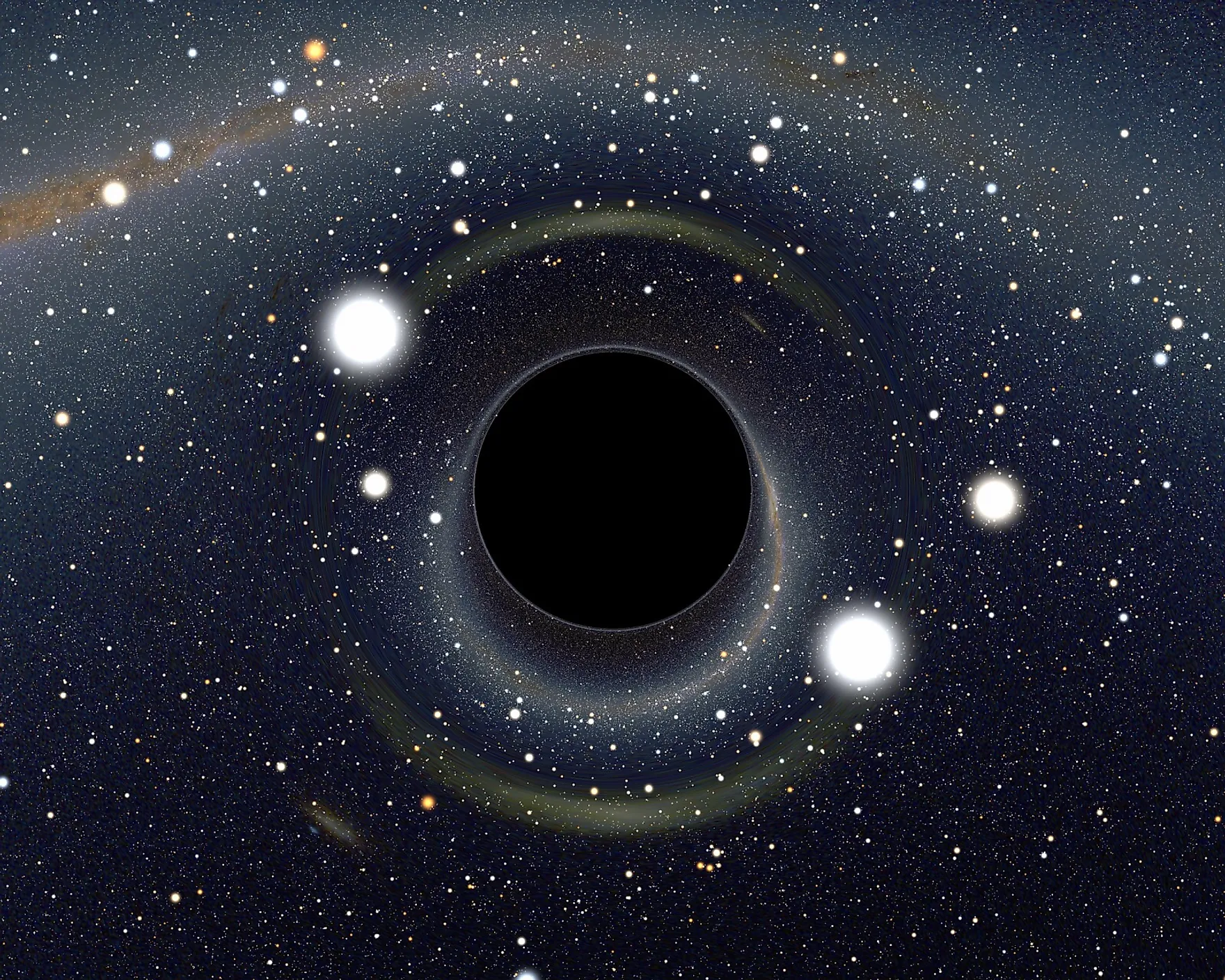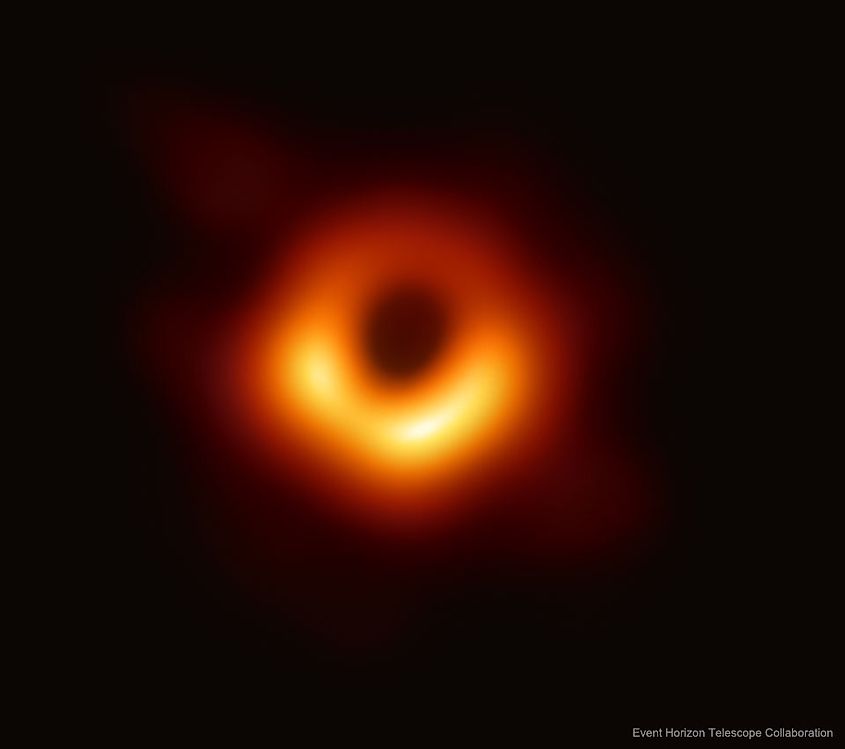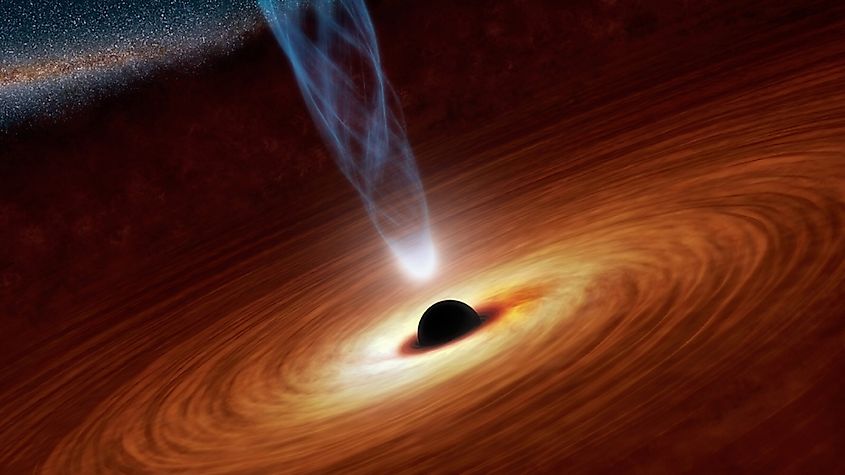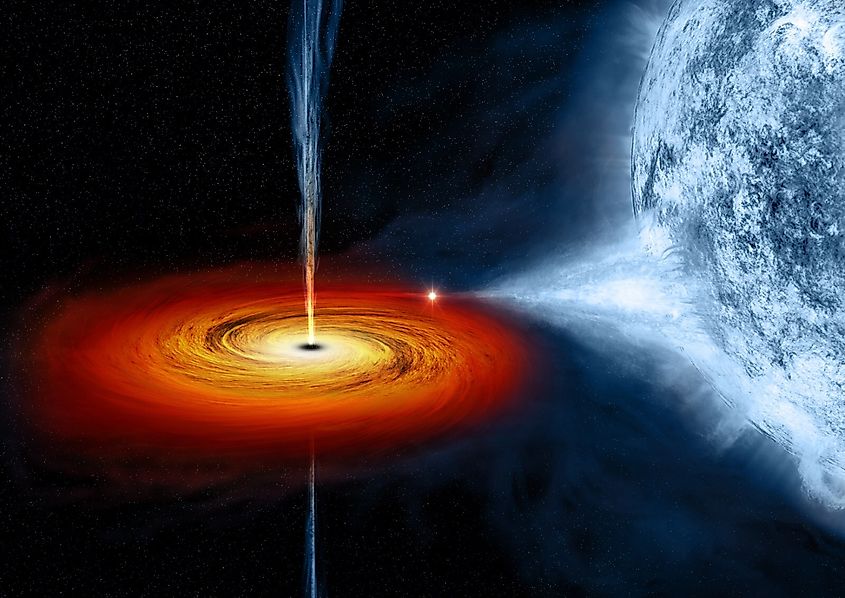
The Smallest Black Hole In The Universe
Black holes are generally thought of as some of the largest structures in the universe. However, black holes come in a range of different sizes and masses. Some are billions of times more massive than the sun, yet others are less than a hundred times the mass of the sun. To date, the smallest known black hole is only three times the mass of the sun, and it also happens to be the closest known black hole at only 1,500 light years away. Three solar masses is exceedingly small for a black hole, and as of yet, scientists do not know how a black hole of this size could have formed.
Types Of Black Holes

Black holes are divided into two general categories: stellar mass black holes and supermassive black holes. Stellar mass black holes are those that form directly from the collapse of a star, while the exact origin of supermassive black holes remains a mystery. Generally, only the most massive stars will produce black holes, and so finding a black hole with a mass of only three suns suggests that smaller mass stars may be capable of becoming black holes. This particular black hole, which was nicknamed the Unicorn, likely formed from the gravitational collapse of a star, yet how a relatively small star was able to produce a black hole remains a mystery.
Discovery

Finding black holes is no easy task. Black holes do not emit or reflect any forms of light, and so astronomers generally rely on indirect methods of detection. In the case of the Unicorn, astronomers were observing a red giant star 1,500 light years away. Observations of the star’s movement suggested a large object was pulling on it. Estimates of the object's mass placed it around three solar masses, yet observations were unable to find any such object. Thus, astronomers determined that the object was a black hole, and it became the smallest black hole ever found in the universe.
How Small Can A Black Hole Be?

In the early 1970s, Stephen Hawking predicted that black holes could potentially be smaller than stellar mass black holes. He came to this realization after his initial discovery of Hawking Radiation, wherein black holes emit radiation and evaporate over time. Black holes gradually decrease in size and mass and then cease to exist entirely. The amount of Hawking Radiation a black hole emits, and thus the rate at which it shrinks, are dependent upon the surface area of a black hole. The larger the black hole, the more slowly it shrinks. Stephen Hawking found that if some stellar mass black holes formed in the early universe not long after the Big Bang, they would be exceedingly tiny today, a type of black hole called a micro black hole. A micro black hole is any black hole whose mass is lower than the sun.











